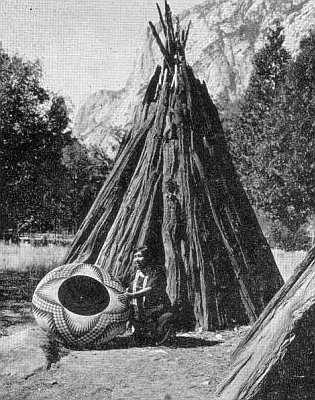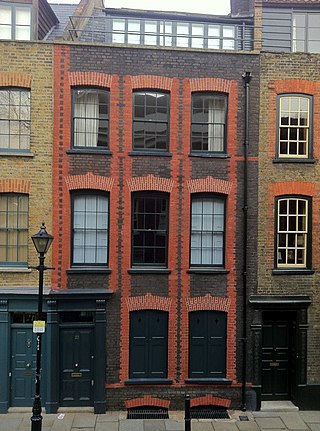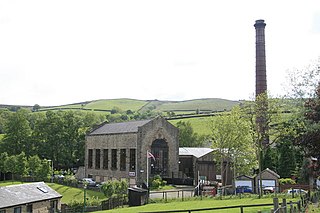
Weavers' windows are large horizontal windows on the top floor of a weavers' cottage that allowed the residents light to weave. Weavers' windows are associated with the Huguenot migration to Britain and Ireland. [1]

Weavers' windows are large horizontal windows on the top floor of a weavers' cottage that allowed the residents light to weave. Weavers' windows are associated with the Huguenot migration to Britain and Ireland. [1]
Before the Industrial Revolution, weaving was carried out in the homes of weavers, and their looms were typically on the top floor of their dwellings, lit by "Weavers' windows", [2] long windows that admitted the most sunlight. [3] Weavers' windows were also called "lights". [4]
In chapter 17 of A Child of the Jago Arthur Morrison wrote:
And the wreckers tore down the foul old houses, laying bare the secret dens of a century of infamy; lifting out the wide sashes of the old ‘weavers’ windows’— the one good feature in the structures letting light and air at last into the subterraneous basements where men and women had swarmed, and bred, and died, like wolves in their lairs. [5]

Adelaide is the capital city of South Australia, the state's largest city and the fifth-most populous city in Australia. "Adelaide" may refer to either Greater Adelaide or the Adelaide city centre. The demonym Adelaidean is used to denote the city and the residents of Adelaide. The Traditional Owners of the Adelaide region are the Kaurna. The area of the city centre and surrounding Park Lands is called Tarndanya in the Kaurna language.

A loom is a device used to weave cloth and tapestry. The basic purpose of any loom is to hold the warp threads under tension to facilitate the interweaving of the weft threads. The precise shape of the loom and its mechanics may vary, but the basic function is the same.

Weaving is a method of textile production in which two distinct sets of yarns or threads are interlaced at right angles to form a fabric or cloth. Other methods are knitting, crocheting, felting, and braiding or plaiting. The longitudinal threads are called the warp and the lateral threads are the weft, woof, or filling. The method in which these threads are interwoven affects the characteristics of the cloth. Cloth is usually woven on a loom, a device that holds the warp threads in place while filling threads are woven through them. A fabric band that meets this definition of cloth can also be made using other methods, including tablet weaving, back strap loom, or other techniques that can be done without looms.

Broadcasting House is the headquarters of the BBC, in Portland Place and Langham Place, London. The first radio broadcast from the building was made on 15 March 1932, and the building was officially opened two months later, on 15 May. The main building is in Art Deco style, with a facing of Portland stone over a steel frame. It is a Grade II* listed building and includes the BBC Radio Theatre, where music and speech programmes are recorded in front of a studio audience.

Quarry Bank Mill in Styal, Cheshire, England, is one of the best preserved textile factories of the Industrial Revolution. Built in 1784, the cotton mill is recorded in the National Heritage List for England as a designated Grade II* listed building. Quarry Bank Mill was established by Samuel Greg, and was notable for innovations both in machinery and also in its approach to labour relations, the latter largely as a result of the work of Greg's wife, Hannah Lightbody. The family took a somewhat paternalistic attitude toward the workers, providing medical care for all and limited education to the children, but all laboured roughly 72 hours per week until 1847 when a new law shortened the hours.

A cotton mill is a building that houses spinning or weaving machinery for the production of yarn or cloth from cotton, an important product during the Industrial Revolution in the development of the factory system.

Basket weaving is the process of weaving or sewing pliable materials into three-dimensional artifacts, such as baskets, mats, mesh bags or even furniture. Craftspeople and artists specialized in making baskets may be known as basket makers and basket weavers. Basket weaving is also a rural craft.

Fournier Street, formerly Church Street, is a street of 18th-century houses in Spitalfields in the East End of London. It is in the London Borough of Tower Hamlets and runs between Commercial Street and Brick Lane. The street is named after a man of Huguenot extraction, George Fournier.

Big Daddy Weave is an American contemporary Christian band from Mobile, Alabama composed of Mike Weaver, Joe Shirk, Jeremy Redmon, and Brian Beihl. They are signed to Fervent Records.

A weavers' cottage was a type of house used by weavers for cloth production in the putting-out system sometimes known as the domestic system.
The Calton weavers were a community of handweavers established in the community of Calton, then in Lanarkshire just outside Glasgow, Scotland in the 18th century. In 1787 the weavers went on strike. Troops opened fire on the demonstrators and six weavers were killed. In the early 19th century, many of the weavers emigrated to Canada, settling in Carleton Place and other communities in eastern Ontario, where they continued their trade.

The Weavers' Triangle is an area of Burnley in Lancashire, England consisting mostly of 19th-century industrial buildings at the western side of town centre clustered around the Leeds and Liverpool Canal. The area has significant historic interest as the cotton mills and associated buildings encapsulate the social and economic development of the town and its weaving industry. From the 1980s, the area has been the focus of major redevelopment efforts.

Queen Street Mill is a former weaving mill in Harle Syke, a suburb to the north-east of Burnley, Lancashire, that is a Grade I listed building. It now operates as a museum and cafe. Currently open for public tours between April and November. Over winter the café is opened on Wednesdays. It is also viewable with private bookings.

A Child of the Jago is an 1896 novel by Arthur Morrison.

Congleton, Macclesfield, Bollington and Stockport, England, were traditionally silk-weaving towns. Silk was woven in Cheshire from the late 1600s. The handloom weavers worked in the attic workshops in their own homes. Macclesfield was famous for silk buttons manufacture. The supply of silk from Italy was precarious and some hand throwing was done, giving way after 1732 to water-driven mills, which were established in Stockport and Macclesfield.

Kete are traditional baskets made and used by New Zealand's Māori people. They are traditionally woven from the leaves of New Zealand flax called harakeke and have two handles at the top. Other materials are sometimes used, including sedge grass or the leaves of the nikau palm and cabbage tree. Modern designs may also use dyed materials. Some kete, known as kete whakairo, or "patterned bag", feature intricate geometric patterns, while more everyday baskets are known as kete mahi or simply kete.

A weaving shed is a distinctive type of mill developed in the early 1800s in Lancashire, Derbyshire and Yorkshire to accommodate the new power looms weaving cotton, silk, woollen and worsted. A weaving shed can be a stand-alone mill, or a component of a combined mill. Power looms cause severe vibrations requiring them to be located on a solid ground floor. In the case of cotton, the weaving shed needs to remain moist. Maximum daylight is achieved, by the sawtooth "north-facing roof lights".

Bancroft Shed was a weaving shed in Barnoldswick, Lancashire, England, situated on the road to Skipton. Construction was started in 1914 and the shed was commissioned in 1920 for James Nutter & Sons Limited. The mill closed on 22 December 1978 and was demolished. The engine house, chimneys and boilers have been preserved and maintained as a working steam museum. The mill was the last steam-driven weaving shed to be constructed and the last to close.

The woollen industry in Wales was at times the country's most important industry, though it often struggled to compete with the better-funded woollen mills in the north of England, and almost disappeared during the 20th century. There is continued demand for quality Welsh woollen products.

Berkhamsted Town Hall is a municipal building in the High Street, Berkhamsted, Hertfordshire, England. It is a Grade II listed building.